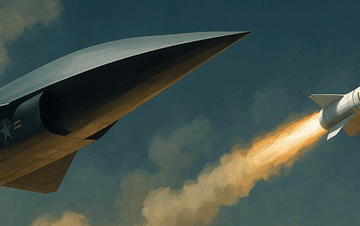China’s foreign ministry continues to call for the creation and ratification of a no first use treaty for the world’s nuclear weapons states. However, American officials rightfully question the motives of this push as intelligence estimates point to the exponential growth of the Chinese arsenal. The changing features of China’s strategic forces show a nation desiring to compete with the US and Russia. Following this line of reasoning, it is logical to assume China is on the path to changing its nuclear doctrine after decades of a relatively passive approach.
China adopted a policy of no first use upon testing its first nuclear weapon in 1964. From a theoretical perspective, proponents of no first use believe such declarations limit the likelihood of nuclear war. By promising only to use nuclear weapons in retaliation for a nuclear attack, intimidation with nuclear weapons is minimal and thus escalation is controllable. This, however, seems to be the opposite direction China is heading.
When the leader of the Chinese Communist Party (CCP), Mao Zedong, declared the creation of the People’s Republic of China (PRC) on October 1, 1949, he faced an increasingly difficult environment for his new nation. Amid ongoing tensions, following the Chinese Civil War, Mao faced the Kuomintang (Chinese nationalists) in Taiwan. The KMT still promised a victory over the communists and was aided by the West. In the years that followed, Mao and the CCP leadership watched, what they deemed, bullying from the nuclear weapons states—the US and Soviet Union. Finally, due to a strained relationship with the Soviet Union, China founded the China National Nuclear Corporation in 1956 to build its nuclear weapons program. After fielding a small nuclear arsenal in the 1960s, China largely downplayed the role of nuclear weapons in Chinese foreign policy and never sought an arsenal to rival the US or Soviet Union.
Today, however, that is rapidly changing. Within the varied set of tools that China has used for coercing its neighbors under gray zone tactics, there is one tool it has not yet tried: threatening the use of nuclear weapons—with the exception of threatening Japan. Premier Xi Jinping called for China to “lead the reform of the global governance system,” transforming institutions and norms in ways that will reflect Beijing’s values and priorities. China’s approach to achieving its strategic goals in the region may transition toward the inclusion of nuclear weapons into its framework of political threats, intimidation, and even the use of force to achieve its international goals.
Today, the PRC is fielding new, more mobile, and more accurate nuclear weapons, while simultaneously enhancing its intelligence, surveillance, and reconnaissance systems. The PRC completed the construction of its three new solid-propellant silo fields in 2022, which cumulatively contain at least 300 new intercontinental ballistic missile (ICBM) silos, with intelligence suggesting those silos are now filled. China’s new strategic plan also includes road-mobile ICBMs that carry at least three multiple, independently targetable reentry vehicles (MIRV). The US first agreed to eliminate MIRV’d missiles from ICBMs with the signing of the START II treaty despite the agreement’s failure to enter into force. Nations like China and India do not believe themselves to be beholden to the same restrictions, regardless of moral condemnation from the arms control community.
In addition to the growing numbers of China’s coast guard fleet, the People’s Liberation Army Navy (PLAN) is also enhancing and producing more advanced surface ships as these become key components of the PRC’s goal of unmitigated regional expansion. The PLAN has numerically the largest navy in the world with an overall battle force of at least 370 ships and submarines, in addition to over 140 major surface combatants. The new Jin-class ballistic missile submarine will carry third-generation JL-3 ballistic missiles designed with a range of greater than 10,000 kilometers, more than capable of striking the American homeland.
To counter this pacing threat, the US needs to think strategically and long term to compete with China’s decades-long expansionist plans. During the Cold War, NATO was formed to prevent a likely invasion of Europe on its eastern front by the Soviet Union. NATO’s structure of strong defensive and ideological commitments, aided by the assistance of the American nuclear umbrella with a high level of credibility, prevented that catastrophe from happening. A similar approach should be developed in Asia. The case of Taiwan is increasingly vital because a failure to defend Taiwan from Chinese aggression may signal the end of American global leadership.
China’s nuclear arsenal, born in 1964 as a small, purely defensive achievement, is now reaching for parity with the United States. The growing power of its nuclear capabilities indicates that PRC leadership intends to update its nuclear policy, moving from a no first use to an active and credible deterrent.
The US should consider at least two strategies to cope with this inevitability: build a stronger political commitment with allies in the Indo-Pacific and continue to counter the Belt and Road Initiative. Regardless of the time it takes for China to declare a new nuclear strategy, preparations within the American government must now begin as if this change has already occurred.
Santiago Spadiliero is a doctoral student at Missouri State University’s School of Defense and Strategic Studies. Views expressed in this article are the author’s own.




